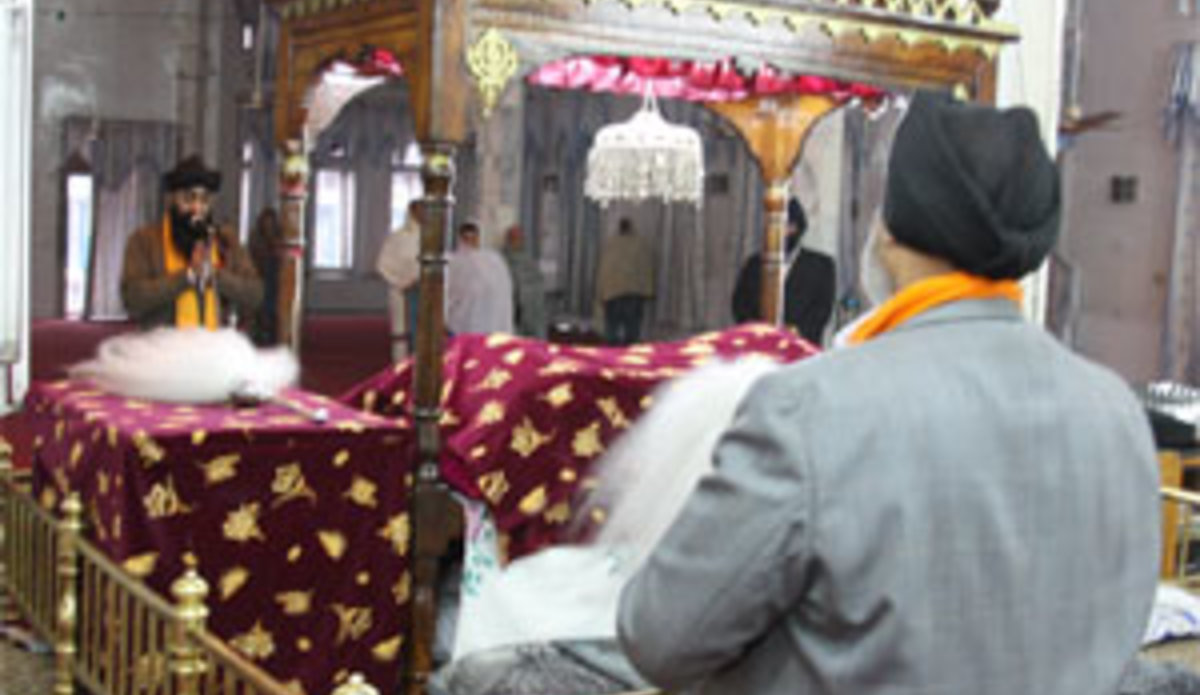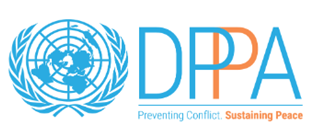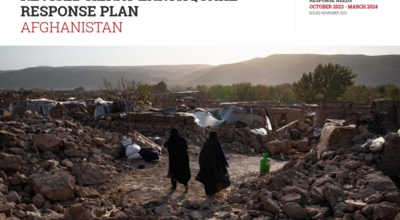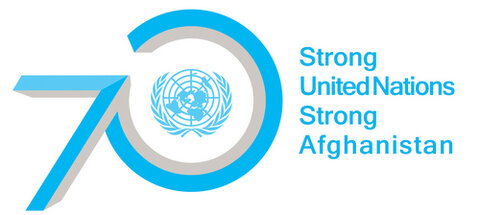Diverse cultures blend well in Afghanistan
9 March 2010 - It wasn’t just the Muslims of Jalalabad who celebrated the holy festival of Eid with pomp and jubilation in the last week of November 2009.
In downtown Jalalabad, minority Hindu-Sikhs were also euphoric about the festival of their Muslim neighbours.
They reached their Muslim brothers’ homes with stacks of big packets wrapped in a white piece of cloth.
Each packet called “thali” contained a big rectangular-shaped steel tray filled with a variety of locally-made chocolates and a piece of cloth for making shirts and pyjamas.
The long list of recipients of the gift also included the powerful governor of Nangarhar Province, Gul Agha Sherzai, and government department heads.
Earlier that month, Muslims went to the homes of Hindu-Sikhs and their temple called Gurudwara, to greet them on the occasion of Puranmasi, one of the two biggest festivals, which is the birthday of their God incarnation, Guru Nanak.
This is how the two diverse communities blend together, maintaining a symbiotic relationship and at the same time preserving their cultural identity, in Pashtun-dominated Jalalabad.
“We have an excellent relationship with our Muslim brothers here,” said Dr Harmeet Singh, 36, who is the spokesperson of the Jalalabad Gurudwara.
Dr Singh, a medical doctor by profession, who graduated from the Nangarhar University, said the Gurudwara also runs a free medical dispensary, which is open to everyone regardless of their religious and ethnic views.
However, in the past, things were not as rosy as they are now.
The head of the Gurudwara, Rawail Singh, said over 26,000 Sikh families – with about 8,000 families in Nangarhar Province alone – were scattered across Afghanistan 30 years ago.
Besides Nangarhar, their concentration was mostly in Kabul, Ghazni, Kandahar, Kunduz and Helmand.
“The number is just 160 in this province now,” said Mr Singh, who holds an MA in Pashto literature.
“After the war started, they came to the cities from districts and then moved to other countries,” he says, recalling that the Sikhs and the Hindus were forced to flee during the mujahideen period.
He said thousands of missiles landed in their communities. “I also had a home, but I sold it. Before the mujahideen period, there was no religion dividing Muslims and non-Muslims.”
In a single incident on 8 March 1989, a rocket in the Gurudwara killed 18 people.
He said with a sigh of relief that relations are better now. “However, there are some crooks who take joy in seeing others fight. But, the majority are good.”
Dr Singh said some people make fun of their appearance, with their unique turban.
Underlining the historical significance of the place, Mr Singh said that Guru Nanak lived for 40 days in the place where the Gurudwara stands now, in 1520.
There are two Gurudwaras and one Hindu temple in Jalalabad city.
The Hindu-Sikhs, who are mostly traders and businessmen, also earn praise from local Muslims.
Daud Wafa, a senior lecturer of literature at Nangarhar University, said the cultural diversity promotes development. “They can play a very good role in the economy,” said Mr Wafa, who is also a journalist with Radio Free Europe/Radio Liberty.
Admitting that the cultural minorities like the Sikhs had serious problems during the first years of the mujahideen regime, the Government and the mujahideen later realized that “these people are very quiet and they don’t create problems”.
The Sikhs have demanded with the government certain facilities like waiver of electricity bills of their Gurudwaras as is the case with mosques.
But, Mr Wafa said the Government is not ignorant towards minority rights, but it hasn’t met their demands because the Government lacks adequate resources.
“Government is not able to solve all their problems,” he said. “But, it’s in no way related to ethnicity or religion.”
But, the Sikhs regret that they are forced to send their children to India, among other countries, to study because there is no school in Afghanistan for them.
Assadullah Musafer, an officer with UNAMA’s Governance section, says Hindus, Sikhs and Pasai tribe make the cultural minority in eastern Afghanistan. “Most of these minorities mix well with the Pashtuns, which constitute about 99 per cent of the population,” said Mr Musafer. “They preserve their cultural identities, but the minority people other than the Sikhs are not visible in the public.”
A few yards from the Gurudwara across the road, 18-year-old Farhad, who owns a general store, says both communities have benefited from each other’s presence there.
“We eat together when they invite us for dinner/lunch parties or participate in the ceremonies in their houses during festivals,” said Mr Farhad.
By Tilak Pokharel and Shafiqullah Waak, UNAMA
This article is a part of a three-week-long series being published daily to mark UNAMA’s Afghan Update Cultural Heritage issue that recognizes Afghanistan’s rich past and the need to preserve it for future generations.
 UN
UN







